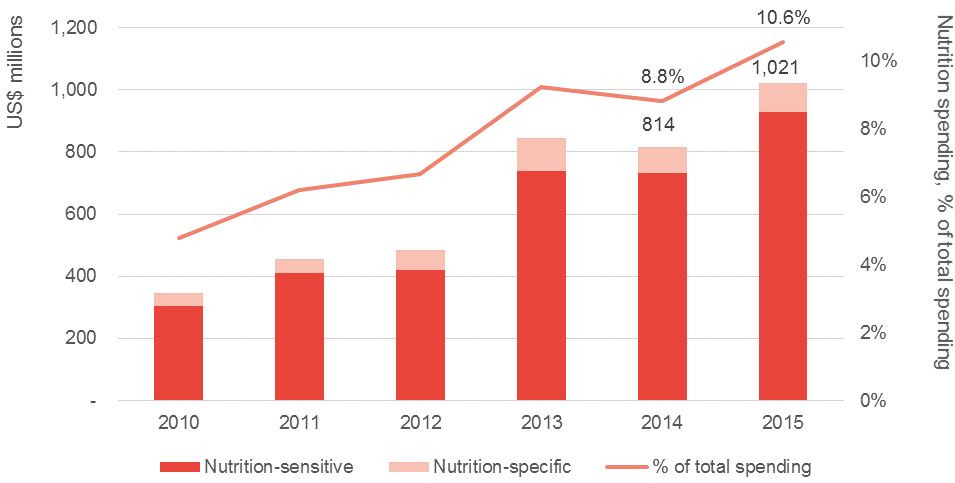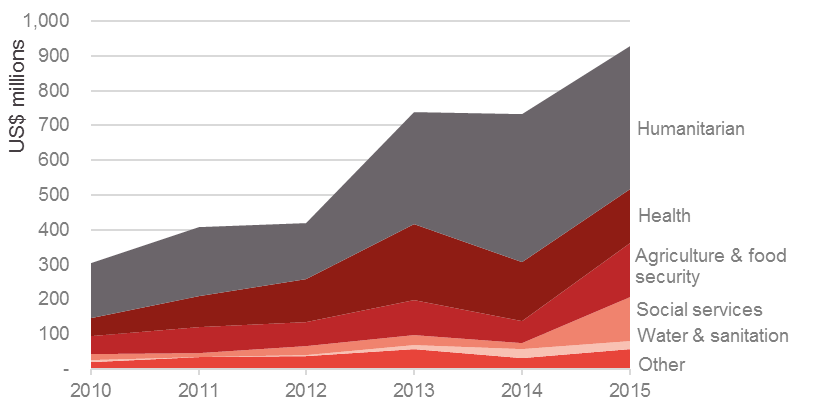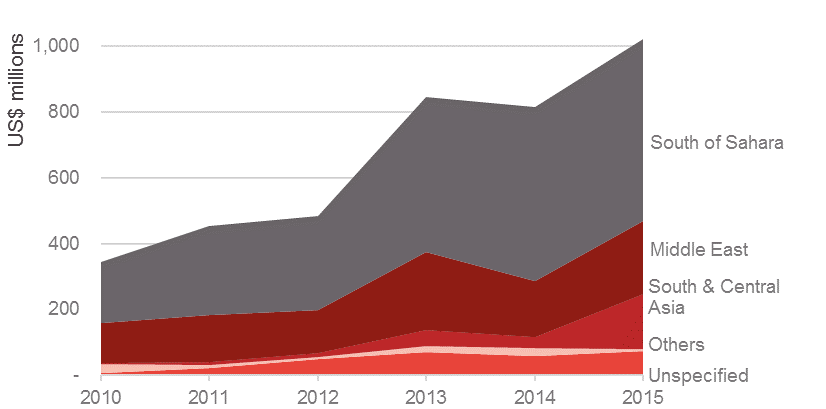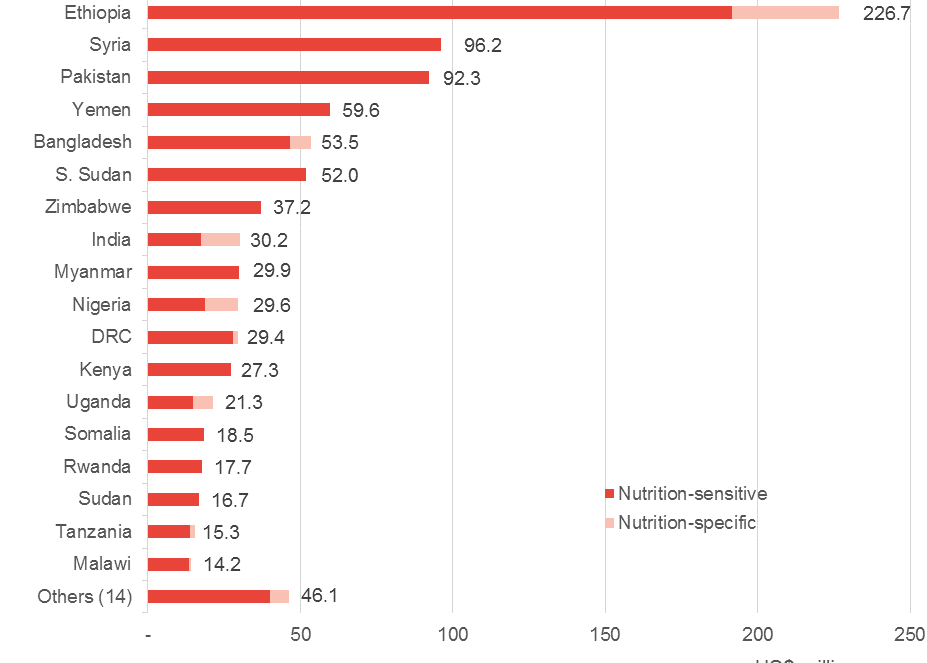What are the key trends in DFID’s aid spending on nutrition?
As efforts continue to better understand donor funding for nutrition, DI has analysed the latest nutrition aid spending by the UK’s Department for International Development (DFID). Here we explore the key trends.
This analysis was conducted by Development Initiatives as part of the Maximising the Quality of Scaling up Nutrition Plus (MQSUN+) programme.
1. Total spending on nutrition by DFID is increasing
DFID’s spending on nutrition has been on an overall upward trend since 2010, and according to the latest data it reached its highest level of US$1 billion in 2015.
2. Nutrition receives a growing proportion of UK aid spending
While the UK’s total bilateral aid budget decreased between 2014 and 2015, the proportion that went to nutrition increased from 8.8% in 2014 to 10.6% in 2015.
Figure 1: The volume of DFID’s nutrition spending, and that as a proportion of total bilateral aid is increasing
3. DFID is funding an increasing number of nutrition-related projects
After a dip in 2014, DFID funded a peak number of projects in 2015 that are either nutrition sensitive[1] or nutrition specific.[2] Most projects are nutrition sensitive, but the proportion of projects that are nutrition specific is increasing.
Figure 2: The total number of DFID-supported nutrition projects is increasing, with a peak in nutrition-specific projects in 2015
4. With almost half of total allocations between 2010 and 2015, humanitarian interventions receive the largest proportion of DFID’s nutrition-sensitive aid
While sector trends in DFID’s nutrition-sensitive spending have stayed largely the same, with humanitarian spending accounting for the largest proportion, there was a notable increase in funding to social services in 2015.
Figure 3: The humanitarian sector receives the largest proportion of DFID’s nutrition-sensitive funding
5. Sub-Saharan Africa receives the majority of DFID’s aid spending on nutrition, but there has been a notable increase to the Middle East
While sub-Saharan Africa continues to receive most funding (54% in 2015), the Middle East saw a five-fold increase in nutrition spending (16% in 2015), primarily due to humanitarian crises in Yemen and Syria.
Figure 4: Sub-Saharan Africa receives the majority of DFID’s nutrition aid, and the proportion to the Middle East is increasing
Ethiopia received a mixture of nutrition-sensitive and nutrition-specific funding.
Figure 5: Ethiopia receives the most nutrition-related aid from DFID, followed by Syria and Pakistan
This analysis was carried out as part of Development Initiatives’ work under the MQSUN+ consortium. View our report DFID’s aid spending for nutrition: 2015
MQSUN+ is supported by UKaid through the Department of International Development; however, the views expressed do not necessarily reflect the UK Government’s official policies. MQSUN+ cannot be held responsible for errors or any consequences arising from the use of information contained in this blog.
Notes
[1] Nutrition-sensitive projects are identified using the SUN Donor Network methodology Each project must meet three criteria:
- It must be aimed at individuals (specifically, women or adolescent girls or children)
- It must include nutrition as a significant objective or indicator
- It must contribute to at least one nutrition-sensitive outcome.
[2] Nutrition-specific spending covers:
- Direct feeding programmes (maternal feeding, breastfeeding and weaning foods, child feeding, and school feeding)
- Determination of micro-nutrient deficiencies
- Provision of nutrients such as vitamin A, iodine and iron
- Monitoring of nutritional status
- Nutrition and food hygiene education
- Household food security.
Related content
Priorities for the UK’s incoming Secretary of State Alok Sharma
As Alok Sharma takes office as Secretary of State, DI's Amy Dodd sets out key priorities for the UK and its global development agenda.
From review to delivery on the Global Goals – what should the immediate priorities be for the UK government?
On 26 June, the UK government published its Voluntary National Review measuring delivery against the Global Goals - but does it accurately capture progress?
Three priorities for the High-level Political Forum 2019
DI Director of Partnerships & Engagement Carolyn Culey sets out three key priorities for closing the gap between the poorest and the rest at HLPF 2019




